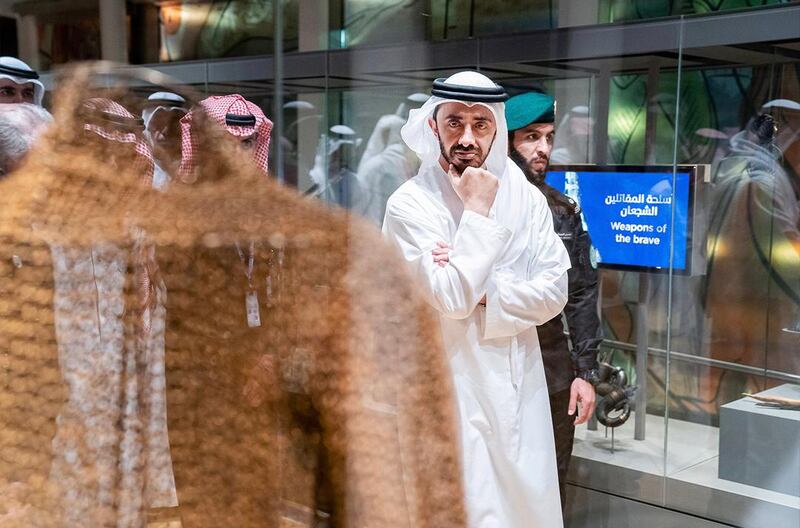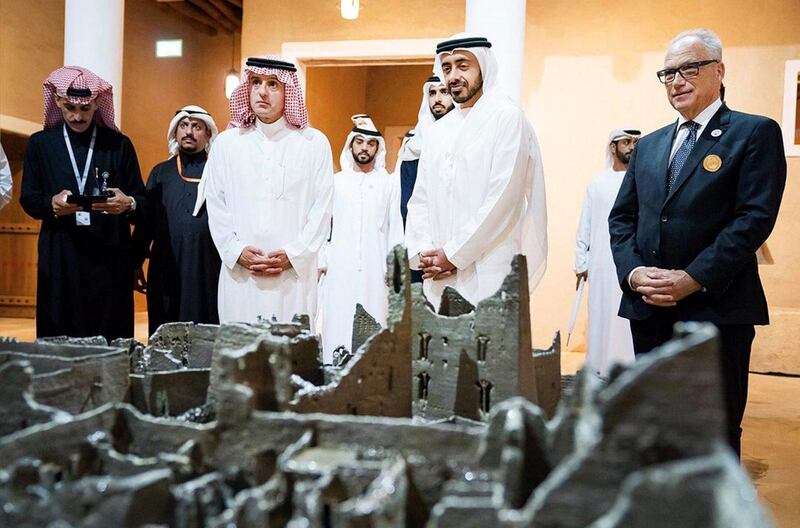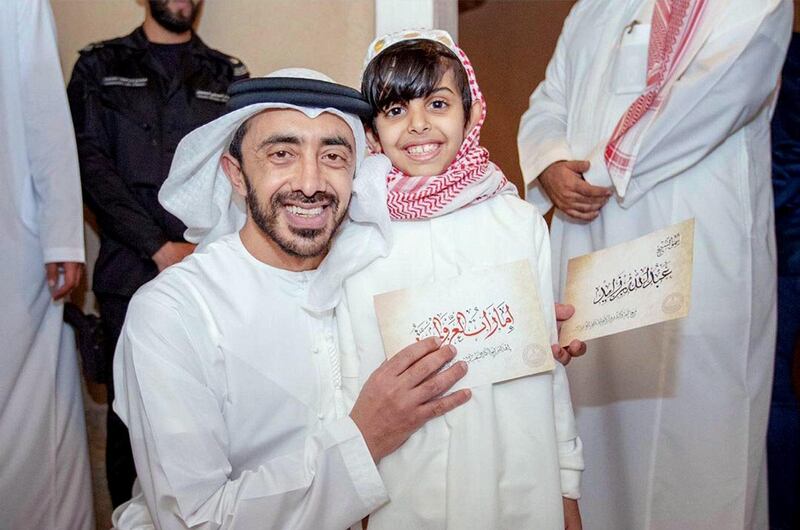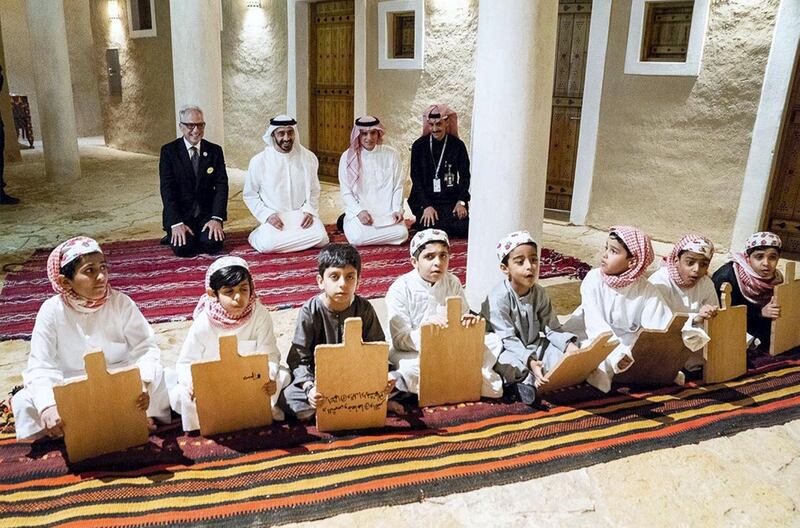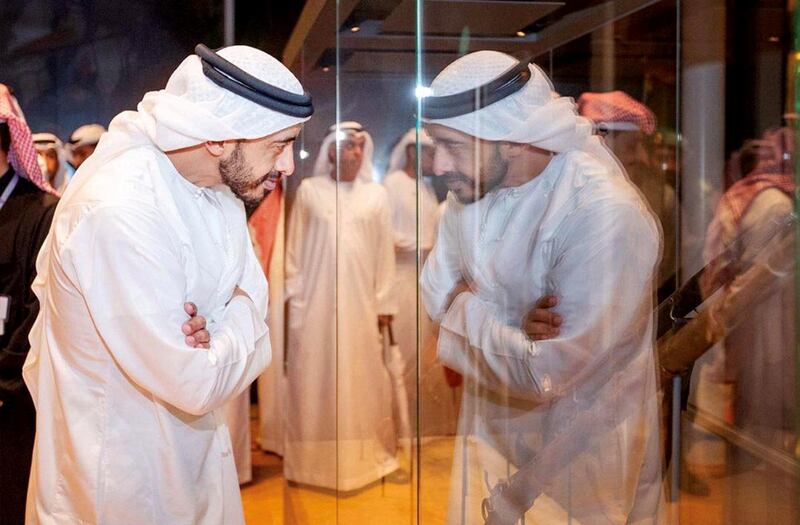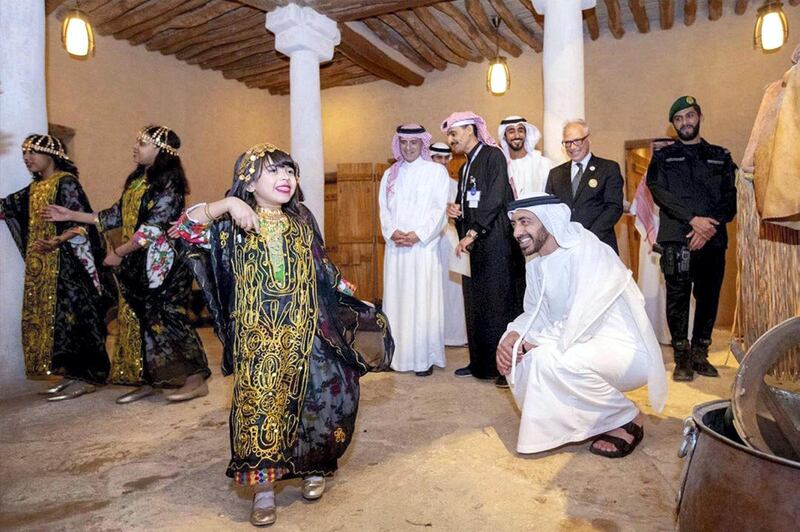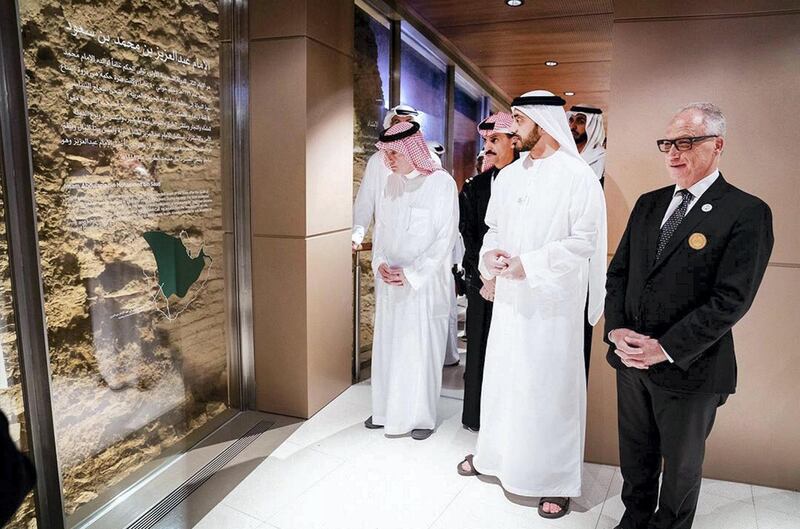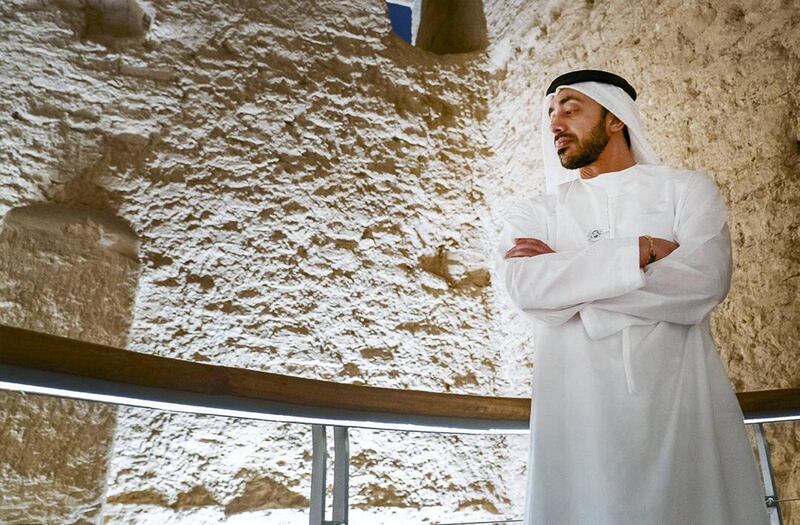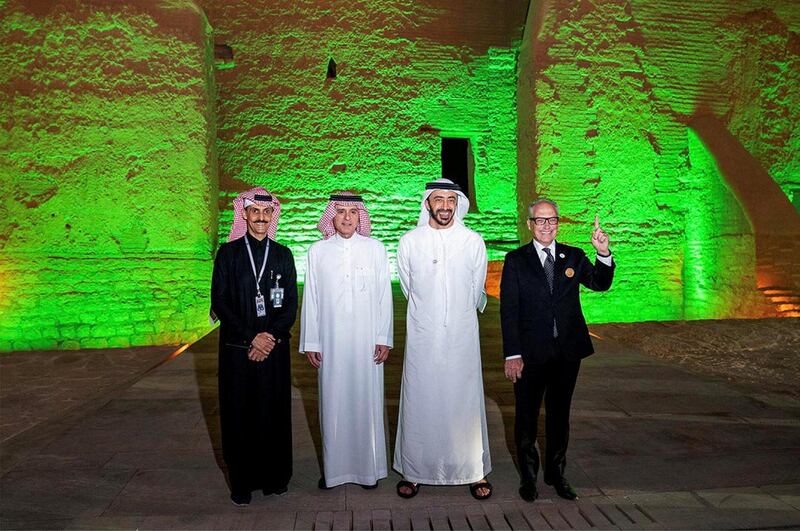The historic Saudi Arabian landmark At-Turaif reopened to the public last night for the first time since gaining Unesco World Heritage Site status in 2010, with a spectacular educational light show attended by the UAE Minister of Foreign Affairs and International Co-operation Sheikh Abdullah bin Zayed.
Light rain fell as the UAE delegation watched the show, which was backed by traditional music and information about the site's history, from rooftop terrace seating.
مقتطفات من جولة #عبدالله_بن_زايد وعادل بن أحمد الجبير في الفعاليات المصاحبة لسباق الفرومولا إي في مدينة #الدرعية #فعاليات_فورملا_الدرعيه #الرياض #السعودية #OFMUAE pic.twitter.com/5FI9B3lViw
— OFM (@OFMUAE) December 15, 2018
The reopening coincided with the Formula E Saudia Ad Diriyah E-Prix on the outskirts of Riyadh, the first time that the all-electric racing series has landed in the kingdom.
The main building of At-Turaif, which is one of five Unesco World Heritage Sites in Saudi Arabia, is the citadel that served as the seat of power of Al Saud.
Founded in the 15th century, it was the first capital of the Saudi dynasty, and was built in the Najdi architectural style, which is specific to the centre of the Arabian Peninsula.
The project is part of Saudi Arabia's push to promote its heritage and coincides with plans to increase tourism in the kingdom.
Since 1976, the 28-hectare site, which houses one of the world’s largest mud-brick cities, has been under the protection of the Saudi government.
Attractions include interactive museums and live cultural performances, giving visitors the chance to experience life at the time of the formation of the first Saudi state.
Jerry Inzerillo, chief executive of Ad Diriyah Gate Development Authority (DGDA), said: “We are tremendously excited to welcome visitors, for the first time, to At-Turaif, where they can experience beautiful Saudi history and traditions in an unparalleled historic landmark. We expect to host as many as 6,000 visitors in At-Turaif this weekend.”
The tours are open to Formula E ticket holders.
In recent months, the DGDA has added thousands of square metres of green surfaces to Ad Diriyah, planting 14,000 indigenous trees and shrubs and more 350 palm trees, as well as laying and repairing more than three kilometres of pavement to make the area more accessible.

